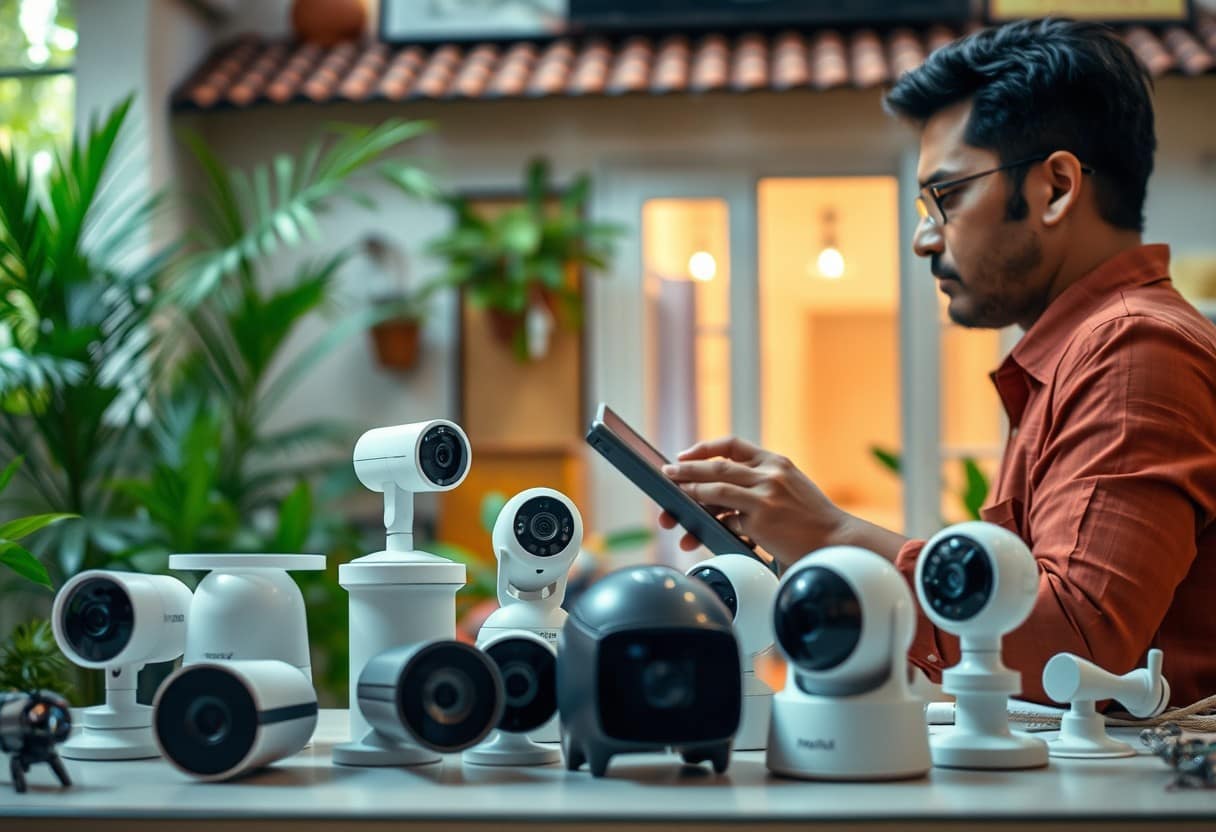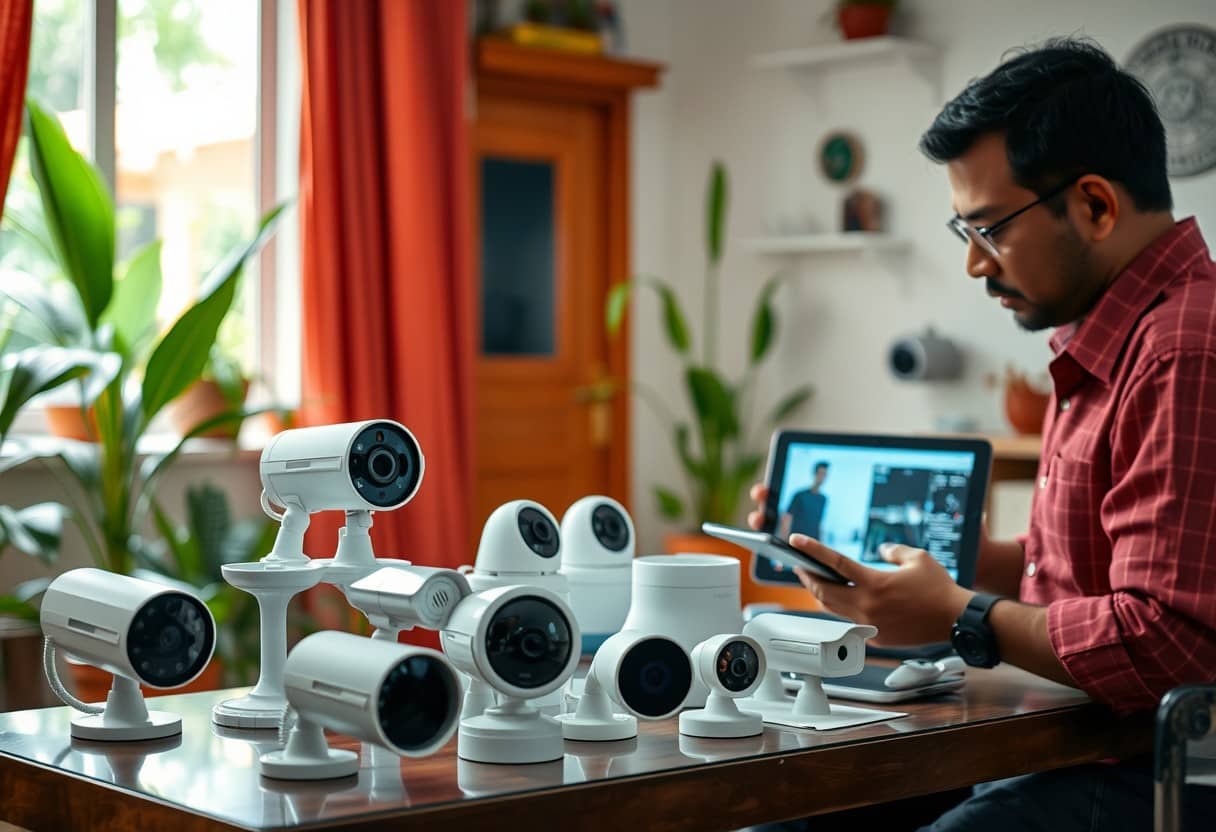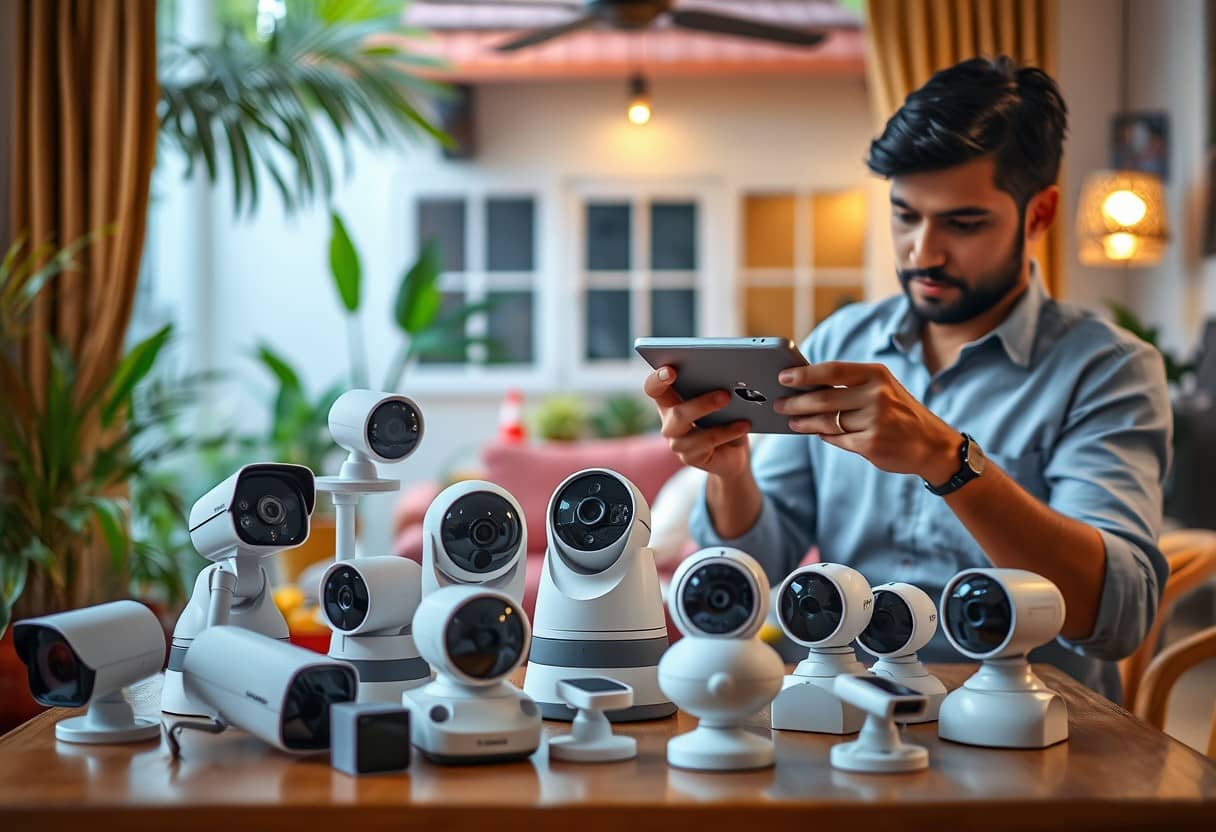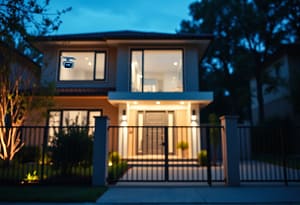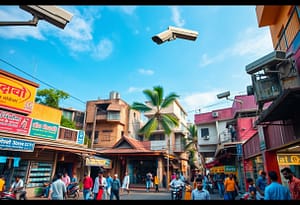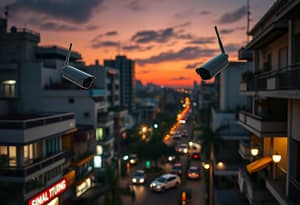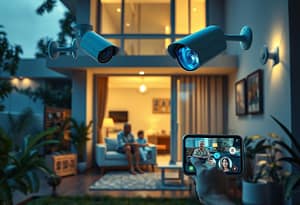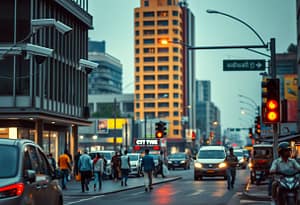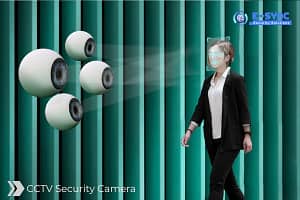Property safety is paramount, especially in a bustling city like Chennai where security concerns are prevalent. Choosing the right security camera can significantly enhance your property’s protection. In this guide, you will learn how to identify your specific needs, evaluate different camera features, and understand the technologies available to ensure you make an informed decision for your home or business. By considering factors such as budget, location, and functionality, you can find the perfect security solution tailored specifically for your property.
Key Takeaways:
- Assess Your Needs: Determine the specific security requirements for your Chennai property, including the areas that need monitoring and the type of surveillance required (indoor/outdoor).
- Choose the Right Type: Familiarize yourself with various camera types available, such as bullet, dome, PTZ, or wireless, to select the one that best fits your environment and usage.
- Consider Video Quality: Opt for cameras with high-resolution capabilities (at least 1080p) to ensure clear imagery for effective monitoring and identification of intruders.
- Evaluate Connectivity Options: Decide between wired and wireless systems, taking into consideration the installation complexity and the reliability based on your property layout.
- Check for Smart Features: Look for cameras with features like motion detection, night vision, two-way audio, and cloud storage for enhanced security and user convenience.
Understanding Your Security Needs
Before choosing a security camera for your Chennai property, it’s vital to first understand your specific security requirements. This involves a comprehensive assessment of your property’s layout, the types of threats you may face, and the level of surveillance you desire. Your security needs will guide your selection of cameras, ensuring that you invest in a system that offers optimal protection for your unique situation.
Assessing Vulnerable Areas of Your Property
With the right approach, you can effectively identify the vulnerable areas within your property. Begin by walking around the exterior and interior, taking note of points of entry such as doors, windows, and garages, which are often targeted by intruders. Additionally, assess any dark or secluded spots that may provide cover for potential threats. Understanding these vulnerable spots will help you strategically position your security cameras for maximum coverage.
Furthermore, consider external factors such as neighboring properties, street lighting, and visibility from the road. Areas that are poorly lit or hidden from passersby pose a higher risk of becoming targets. By mapping out your property’s vulnerabilities, you can make informed decisions on the type and number of cameras required to deter crime and enhance your overall security.
Identifying Specific Security Goals
Assuming you have a clear understanding of your vulnerabilities, it’s crucial to define your specific security goals. Ask yourself what you hope to achieve with a security camera system. Are you looking to deter theft, monitor activity in real-time, or gather evidence in case of an incident? Establishing these goals will not only help you assess the number of cameras needed but also the features you should prioritize, such as high-definition recording, night vision, or remote access capabilities.
Your security goals should encompass both immediate and long-term objectives. For instance, you might want to ensure the safety of your family and property while also considering how easily you can expand your security system if needed. The clearer your objectives, the better you can tailor your camera selection to meet those needs effectively.
Evaluating Coverage Needs
Goals such as monitoring critical areas and providing full property coverage are pivotal when selecting a security camera system. Assess how many cameras you will need based on the size of your property and the specific areas you want to monitor. A larger property may require more cameras to ensure there are no blind spots, while a smaller property might only need a few strategically placed devices. Take into consideration both indoor and outdoor zones, as well as common areas where incidents are likely to occur.
Your coverage needs may vary based on your lifestyle as well. If you travel frequently or have an irregular schedule, you’ll want to ensure that your system covers vital areas even in your absence. Additionally, consider whether you need 24/7 monitoring or if you only require surveillance during certain hours. By understanding your coverage needs, you can invest in an appropriate camera system that affords peace of mind and security.
This thorough evaluation will help you select the right number of cameras with the necessary features, ensuring that your property is adequately monitored and protected. Choosing a security system that aligns with your coverage needs ultimately leads to a safer environment for you and your loved ones.
Types of Security Cameras
You may find yourself overwhelmed by the variety of security cameras available for your Chennai property. However, understanding the different types can simplify your choice. Here’s a breakdown of key types:
- Bullet Cameras
- Dome Cameras
- PTZ Cameras (Pan-Tilt-Zoom)
- Box Cameras
- Fisheye Cameras
Perceiving the distinctions between these types can help you select the most suitable camera that fits your specific security needs.
| Camera Type | Best Use |
|---|---|
| Bullet Cameras | Long-distance viewing. |
| Dome Cameras | Indoor environments and discretionary surveillance. |
| PTZ Cameras | Large areas requiring remote control. |
| Box Cameras | Custom lens for specific needs. |
| Fisheye Cameras | 360-degree views in confined spaces. |
Wired vs. Wireless Cameras
On your journey to securing your property, the choice between wired and wireless cameras is a fundamental one. Wired cameras often offer a reliable connection and are less susceptible to interference or signal loss. They can provide high-quality images and continuous power supply, making them ideal for long-term installations. However, installation might require professional assistance, as routing cables can be cumbersome and invasive.
On the other hand, wireless cameras provide the convenience of flexible placement without the hassle of running cables. They are particularly useful for temporary setups or locations where running wires would be impractical. Yet, it’s vital to consider the vicinity to your Wi-Fi network, as signal strength can affect performance. Finally, battery-operated options may require regular maintenance for power.
Indoor vs. Outdoor Cameras
With the distinction between indoor and outdoor cameras, you must consider your specific security environment. Indoor cameras are typically designed to capture less intense lighting and potential intrusions within a property. They tend to have a more discreet design, often resembling everyday objects, making them less visible to potential thieves. They also focus on controlling activities within your home or business.
In contrast, outdoor cameras are rugged and weatherproof, built to withstand various environmental elements like rain and extreme temperatures. They often come with features like infrared night vision and motion sensitivity, providing robust protection against break-ins and vandalism. Choosing between them depends on where you envision the greatest risks to your property.
Cameras placed strategically can ensure all angles of your property are covered, whether for indoor monitoring or outdoor surveillance.
Surveillance vs. Monitoring Cameras
One of the primary distinctions in choosing a camera is understanding surveillance cameras compared to monitoring cameras. Surveillance cameras are typically designed for security purposes such as preventing crime and capturing evidence. They usually offer features like motion detection, night vision, and recording capabilities, enabling you to track and record incidents that occur on your property over time.
In contrast, monitoring cameras are often used for observing or supervising activities within a specific space. They may provide a live feed and are commonly used for systems that require active human supervision, such as in a childcare facility or office environments. While both types may share functionalities, your choice will be influenced by whether your focus is on security or oversight.
Understanding the differences between these camera types will help inform the security needs of your property.
Smart Cameras vs. Traditional Cameras
Cameras have evolved significantly with the introduction of smart technology, leading to a discussion about smart cameras versus traditional cameras. Smart cameras are equipped with advanced features like mobile connectivity, cloud storage, and AI-driven analytics. They can send alerts to your device, allowing for instant monitoring no matter where you are. This real-time accessibility empowers you to take quicker actions in response to any security threat.
Conversely, traditional cameras often rely on direct recording methods without the intelligence of modern technology. While they can still serve their purpose, they may lack the convenience and flexibility offered by their smart counterparts. You should weigh the benefits of both, particularly how much you value real-time data access and remote monitoring capabilities in your security setup.
The rapid advancement in technology means that traditional cameras might soon become obsolete, giving way to more sophisticated systems. Evaluating your preferences is vital when deciding which type best meets your property’s security requirements.
Key Features to Consider
To select the perfect security camera for your Chennai property, there are several key features you must consider. A well-thought-out decision can enhance your property’s safety and provide peace of mind. Here’s a detailed list of features you should look into:
- Resolution and Image Quality
- Night Vision Capabilities
- Motion Detection and Alerts
- Storage Options: Cloud vs. Local
- Field of View and Lens Types
Assume that each of these features plays a crucial role in determining the effectiveness of your security camera. Understanding these specifications will aid you in making an informed choice that fits your needs.
Resolution and Image Quality
An important feature to consider when choosing a security camera is its resolution and image quality. Higher resolution cameras provide clearer, more detailed images, making it easier to identify faces, read license plates, and observe activities. Look for cameras that offer at least 1080p resolution for optimal clarity. Additionally, factors such as the sensor quality will contribute significantly to the overall image performance, especially in varying lighting conditions.
Choosing a camera with adjustable image quality settings can also be beneficial. This allows you to modify the resolution depending on your storage capacity and internet bandwidth, ensuring that you are getting the best possible footage without overwhelming your system. The overall sharper the image, the better equipped you are to respond to incidents.
Night Vision Capabilities
The capability of a camera to capture clear images in low-light and nighttime conditions is another critical factor. Ideal security cameras should have infrared (IR) night vision, which allows them to provide footage even in complete darkness. The range of night vision can vary significantly among different models, so it’s vital to check how effectively a camera can monitor your property at night.
To ensure your camera’s effectiveness, consider models with features like smart IR, which adjust the intensity of infrared lighting based on distance to avoid overexposure in close-up shots. This results in clearer night footage, enabling you to discern important details in darker settings.
Motion Detection and Alerts
On top of capturing footage, having motion detection and alert capabilities is important. This feature allows your camera to alert you in real-time via notifications whenever motion is detected within its view. Many cameras allow you to customize the sensitivity and specific areas in view to fine-tune alerts, avoiding false alarms from passing vehicles or pets.
Resolution is paramount when considering motion algorithms as well. Cameras with higher resolution can differentiate between significant movements and background noise, which increases system efficiency and reduces unnecessary alerts. Being proactive can help you respond faster to possible security breaches.
Storage Options: Cloud vs. Local
Consider the storage options available for your security footage. Cloud storage offers convenience and ease of access, allowing you to view your footage from anywhere, anytime. Many services come with a monthly or yearly fee, and offer various data retention durations. However, you need to weigh the costs and ensure that your internet connection can consistently handle the data upload.
Local storage options, such as SD cards or Network Video Recorders (NVR), may have a one-time purchase fee but can save you ongoing costs. It also gives you full control over your footage without worrying about subscription fees. However, remember that local storage may pose the risk of being tampered with or stolen.
Field of View and Lens Types
While selecting a security camera, consider the field of view and the types of lenses available. A wide field of view allows a camera to cover more area, reducing the number of cameras needed for complete property coverage. On the other hand, cameras with narrower fields of view can provide more focal clarity but may require more units for controlled coverage.
| Field of View | Lens Types |
| Wide Angle (90-180 degrees) | Fixed Lens |
| Narrow Angle (less than 90 degrees) | Adjustable Lens |
| Pan-Tilt-Zoom (PTZ) | Varifocal Lens |
| 360-Degree View | Smart Lens |
Plus, understanding the relative benefits of each lens type can assist you in tailoring your security solutions. For example, a PTZ camera is ideal for monitoring larger areas while allowing you to zoom in on specific details when necessary. You should also think about the possibility of varying the lenses if your security needs may evolve.
- Varifocal Lens for customizable zooming options
- Fixed Lens for a specific surveillance area
- Wide Angle for greater coverage
- PTZ for directed control over a larger area
- Low-Light Capabilities for enhanced visibility
Thou should ensure that your chosen lens type matches how you plan to utilize your security setup. Each option provides distinct capabilities that can significantly impact your monitoring effectiveness.
Budgeting for Your Security Camera
Despite the growing necessity for security cameras in today’s world, budgeting for them can still appear as a daunting task. You need to consider various factors that influence the overall investment required. This budget will encompass not only the price of the camera itself but also installation costs, ongoing maintenance, and potential additional services that may come with the system.
Overall Cost Considerations
Any responsible budgeting for security cameras begins with understanding the entire cost spectrum. This involves evaluating how much you are willing to invest based on the level of security your property requires. Recall, a lower-priced option may seem attractive at first, but it’s crucial to consider its reliability, features, and warranties encountered during purchase.
Comparing Costs of Different Models
There’s a wide range of security cameras available, each priced differently based on their features and specifications. It’s necessary to compare various models to get a clearer idea of which options fit within your financial plan while meeting your security needs.
| Camera Type | Approximate Cost |
| Basic Wired Camera | ₹2,000 – ₹5,000 |
| Wireless Camera | ₹3,000 – ₹8,000 |
| PAN-Tilt-Zoom Camera | ₹5,000 – ₹15,000 |
| 5MP/4K Cameras | ₹10,000 – ₹25,000 |
Cost comparisons among different models should also consider any additional functionalities such as night vision, motion detection, and cloud storage. As the market for security cameras grows, you’ll find options that fit almost every budget. Thus, make sure to prioritizing your requirements when comparing these choices.
| Feature | Impact on Price |
| Resolution Quality | Higher resolution equals higher cost |
| Storage Options | Cloud storage typically costs more than local storage |
| Smart Features | Integrated AI features can increase the price |
Cost-Effectiveness vs. Features
There’s often a fine line between achieving cost-effectiveness and having the features required for robust security. While it’s tempting to go for the cheapest camera, consider how much you’d be willing to pay for features that could enhance your property’s security significantly. It’s all about finding the right balance that meets both your budget and security expectations.
In many cases, investing a little more upfront for a high-quality security camera with advanced features can save you money in the long run. A well-structured security camera system will not only protect your property but can also deter potential criminals more effectively than a basic model. Understanding your specific needs in security will guide you towards the most cost-effective yet feature-rich options available.
A comprehensive approach to budgeting helps you prevent overspending while ensuring you invest in a system that offers the best value for your safety. Assessing your property’s vulnerabilities will help accurately pin down the required features, thereby allowing you to devise an effective financial plan.
Installation Considerations
Once again, the installation phase is a crucial step when it comes to securing your property with the right security camera system. Making informed decisions during this stage will not only enhance the effectiveness of your surveillance but also ensure longevity and ease of use. You must consider both the methods of installation and the strategic placement of your cameras to maximize their potential.
DIY Installation vs. Professional Installation
There’s an ongoing debate about whether to install your security cameras yourself or hire a professional. If you are technically inclined and willing to invest the time, DIY installation can save you money and allow for a more personalized setup. Many modern security cameras come with user-friendly installation guides, making it relatively straightforward to mount them and connect them to your network. However, you need to have a solid plan in place to avoid common pitfalls, such as poorly placed cameras or faulty wiring.
On the other hand, professional installation provides the benefit of expert opinions and ensures optimal setup. Professionals can assess your property efficiently, identifying blind spots and recommending camera types suited for various environments. They are also well-versed in local regulations related to surveillance, so you can rest assured your installation is compliant. Consider your budget and technical skills when deciding which route is best for your specific situation.
Optimal Camera Placement Strategies
Assuming you have selected the right type of security cameras, optimal placement is vital for capturing the best footage. Start by identifying the key areas you wish to monitor, such as entrances, driveways, and common areas within your property. Placing cameras at these strategic points ensures comprehensive coverage, minimizing blind spots that could be exploited by intruders. Additionally, consider mounting your cameras high enough to discourage tampering while also angling them to capture faces, license plates, or other identifying details.
Installation angles and distances also matter when it comes to camera placement. You should position your cameras to observe motion as it happens, rather than waiting for someone to enter their view. Supplementing outdoor cameras with indoor ones is a wise strategy as well, ensuring you can monitor activity both inside and around your property.
Essential Tools for Installation
Installation of your security cameras may require certain imperative tools to make the job easier and more efficient. Basic tools such as a drill, screwdriver, and level are indispensable for mounting cameras securely. A cable tester can also be of great help to confirm that all connections are functioning before you finalize their placement. If you’re using wired cameras, having cable management tools will allow you to neatly organize and conceal wiring to maintain your property’s aesthetic.
Depending on the setup complexity, supplementary tools like a ladder, a utility knife, and electrical tape might come in handy to ensure you’re thoroughly prepared. Being equipped with the right tools not only smooths the installation process but also helps to ensure your cameras are installed correctly and safely.
Installation can be a straightforward process if you are aware of the necessary tools and preparation needed. Properly organized tools make your job easier and create an efficient work environment. It’s worth taking the time to gather everything you may need before you start, ensuring that you can focus solely on achieving the best placement for your security cameras.
Maintenance and Updates
Unlike many consumer electronics, security cameras require specific attention to maintenance and updates to ensure they function effectively over time. Your safety and peace of mind depend heavily on the reliability of these devices, so it’s crucial to establish a routine for their care. Regular maintenance can minimize the risk of malfunctions or security breaches, allowing you to trust your surveillance system fully.
Regular Maintenance Tips
While setting up your security cameras is vital, their ongoing maintenance is just as critical. Here are some regular maintenance tips to keep your cameras functioning optimally:
- Clean the camera lenses regularly to prevent dirt or debris from obstructing the view.
- Check the mounting brackets and connections to ensure they remain secure and free from damage.
- Inspect the cables for wear or corrosion that could compromise power or signal.
- Test the functionality of the cameras periodically, including the motion detection capabilities.
- Ensure your internet connection is stable to maintain cloud connectivity for remote monitoring.
Thou must never overlook these maintenance practices to avoid unnecessary disruptions in your surveillance system.
Software and Firmware Updates
Firmware updates are necessary for your security cameras to operate at their best. These updates often come with enhancements, new features, security patches, and bug fixes vital for maintaining the integrity of your system. To safeguard your property effectively, you should stay informed and promptly install any available updates. This will help bolster the security measures in place while enhancing the overall functionality of your cameras.
Maintenance of software and firmware is not just about applying updates; it also involves periodically checking for new releases from the manufacturer. Subscribe to notifications or regularly visit the manufacturer’s website to stay updated. Many modern security cameras have options for automatic updates, so enabling this feature can simplify the process for you.
Troubleshooting Common Issues
One of the best ways to ensure that your security camera operates seamlessly is to be prepared to troubleshoot common issues that may arise. Familiarize yourself with potential problems such as connectivity issues, power failures, or video storage errors. The more you know, the quicker you can address these hiccups when they occur, thus maintaining the integrity of your surveillance system.
A proactive approach to troubleshooting includes keeping your user manual handy, understanding common error messages, and knowing when to seek professional assistance. By taking the time to learn about your cameras and their functions, you can empower yourself to solve issues efficiently, ensuring your home remains safe and secure at all times.
Final Words
Hence, choosing the perfect security camera for your Chennai property involves careful consideration of multiple factors, including the specific security needs of your environment, the camera features that are most beneficial, and the overall budget you have in mind. Assessing the layout of your property, the areas that need monitoring, and the level of visibility you require will guide you in selecting the right type of camera—be it indoor, outdoor, wired, or wireless. Additionally, you should consider aspects such as resolution, night vision capabilities, motion detection, and your preference for remote access options through apps or cloud storage. Understanding these features will empower you to make an informed decision that maximizes security without compromising your finances.
Furthermore, it’s imperative to stay updated with the latest advancements in security technology, especially as Chennai continues to evolve in terms of urban development and safety measures. Consulting with security professionals or local experts can provide valuable insights and tailored advice based on your property’s unique circumstances. Remember that investing in a quality security camera system not only enhances the safety of your property but also gives you peace of mind, knowing that your home and loved ones are protected. By following these guidelines, you can confidently select a security camera that meets your specific needs and complements your lifestyle.
FAQ
Q: What factors should I consider when selecting a security camera for my Chennai property?
A: When choosing a security camera for your Chennai property, consider the following factors:
1. **Resolution**: Ensure the camera has a high resolution (1080p or higher) for clear images, particularly in low light conditions.
2. **Weather Resistance**: Given Chennai’s coastal climate, select cameras that are weatherproof (IP66 or higher) to withstand humidity and rain.
3. **Field of View**: Choose cameras with a wide field of view (at least 90 degrees) to cover larger areas.
4. **Connectivity**: Decide between wired or wireless options based on your property layout and internet connectivity.
5. **Night Vision**: Opt for cameras with night vision capabilities to ensure security during the night.
6. **Storage Options**: Consider how footage will be stored, whether on cloud storage, local storage, or both.
7. **Budget**: Balance features with your budget, making sure you choose a reliable and effective camera without overspending.
Q: Are there specific features that improve the effectiveness of security cameras in Chennai?
A: Yes, several features can enhance the effectiveness of security cameras in Chennai:
1. **Motion Detection**: Look for cameras with advanced motion detection features that send alerts when movement is detected.
2. **Two-Way Audio**: Cameras with two-way audio allow you to communicate with visitors or intruders, adding an extra layer of security.
3. **Pan-Tilt-Zoom (PTZ) Functionality**: PTZ cameras enable you to control the camera remotely, allowing for a wider coverage area and the ability to zoom in on suspicious activity.
4. **Integration with Smart Home Systems**: Cameras that can be integrated with smart home systems (like Google Home or Amazon Alexa) offer added convenience and control.
5. **Cloud Backup**: Ensure the camera offers cloud backup options to protect against storage theft and ensure you can access footage remotely.
Q: How can I ensure the security camera I choose is suitable for my specific property type in Chennai?
A: To ensure the security camera is suitable for your specific property type, consider the following steps:
1. **Property Layout**: Assess the layout of your property. For larger properties, you may need multiple cameras or cameras with a longer range.
2. **Surrounding Environment**: Consider the amount of outdoor space, lighting conditions, and potential obstructions (trees, fences) that might impact visibility.
3. **Entry Points**: Identify all potential entry points to your property, including doors and windows, and select cameras that can monitor these areas effectively.
4. **Safety Compliance**: Ensure that your chosen security camera complies with local regulations in Chennai regarding surveillance systems.
5. **Professional Consultation**: If in doubt, consult with a local security expert who can analyze your property and recommend the best camera setup for your needs.

